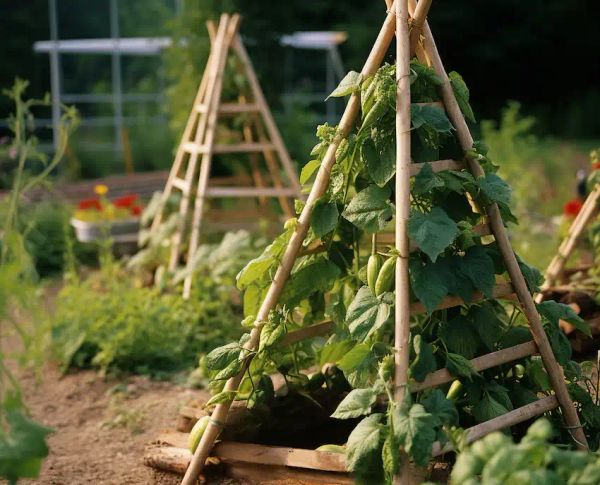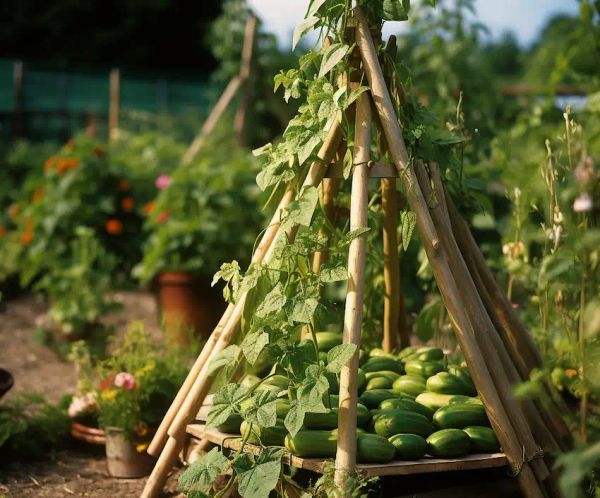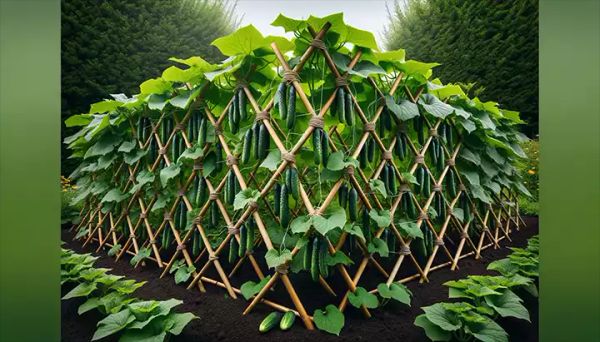Cucumbers are an excellent addition to any garden, known for their versatility in the kitchen and relatively easy cultivation process. If you’re looking for a way to maximize yield and improve the aesthetics of your garden, consider growing cucumbers in a herringbone pattern.

This innovative method not only optimizes space but also promotes healthier plants. Let’s explore how and why you should try this pattern for your cucumber plants.
The Benefits of a Herringbone Pattern
- Maximizes Space: By planting cucumbers in a herringbone pattern, you can effectively utilize limited garden space.
- Improves Air Circulation: The arrangement allows for better airflow between plants, reducing the risk of diseases.

- Enhances Sunlight Exposure: Each plant receives ample sunlight, vital for growth and fruitful production.
- Facilitates Harvesting: The clear structure of the herringbone pattern makes it easier to spot and pick the cucumbers.
- Aesthetic Appeal: The distinctive pattern adds visual interest to your garden, making it a joy to look at.
Step 1: Planning Your Space
To get started, follow these simple steps:

- Choose a Sunny Spot: Select a location in your garden that receives plenty of sunlight since cucumbers thrive under full sun.
- Soil Preparation: The soil should be rich, well-draining, and slightly acidic to neutral (pH 6.0-7.0). Enrich it with compost or well-rotted manure before planting.
- Spacing: Allocate at least 18 inches of space around each cucumber plant to accommodate the spread of the herringbone pattern.
Step 2: Creating the Herringbone Structure
Here’s what you’ll need:
- Sturdy Stakes: Bamboo or similar stakes will work well.
- Garden Twine or Netting: Used to secure the stakes and provide support for the plants.
Follow these installation steps:
- Place Parallel Stakes: Position two rows of parallel stakes about 18 inches apart.
- Angle the Stakes: In each row, angle the stakes so they intersect at the top, resembling a series of ‘X’ shapes when viewed from the end of the row.
- Secure the Stakes: Fasten the stakes together at the top where they intersect.
- Repeat the Process: Repeat the process, ensuring that each ‘X’ shape is approximately 18 inches away from the next.
- Connect with Twine or Netting: Finally, connect all the stakes with twine or netting to provide support as the plants grow.
Step 3: Planting and Training the Cucumbers
Getting your cucumbers off to a good start is essential. Follow these steps:
Sowing Seeds:
- Direct Planting: Plant cucumber seeds directly into the prepared soil, placing them at the base of each stake.
- Keep Moist: Water the seeds well and maintain consistent soil moisture until germination.
Training the Vines:
- Guide the Vines: As the cucumber plants grow, gently guide the vines up the stakes.
- Secure the Vines: Use soft plant ties or clips to attach the vines to the twine or netting.
- Prune Lateral Branches: Regularly trim lateral branches to encourage vertical growth and improve air circulation.
Step 4: Ongoing Care
Once your cucumber plants are established, follow these care tips:
- Watering: Provide regular watering to keep the soil consistently moist but not waterlogged.
- Fertilizing: Feed the plants with a balanced fertilizer every 4-6 weeks during the growing season.
- Pest and Disease Management: Keep an eye out for pests or diseases and manage them organically using methods like neem oil or insecticidal soap.
Step 5: Harvesting
Enjoy the fruits of your labor with these recommendations:
- Timing: Harvest cucumbers when they are medium-sized, firm, and their skin is bright green.
- Safe Harvesting: Cut the cucumbers from the vine using a sharp knife or scissors to avoid damaging the plant.
By adopting the herringbone pattern for growing cucumbers, you can create an organized and productive garden. Utilize your garden space efficiently, and enjoy the fresh and bountiful produce throughout the season. Happy gardening!




